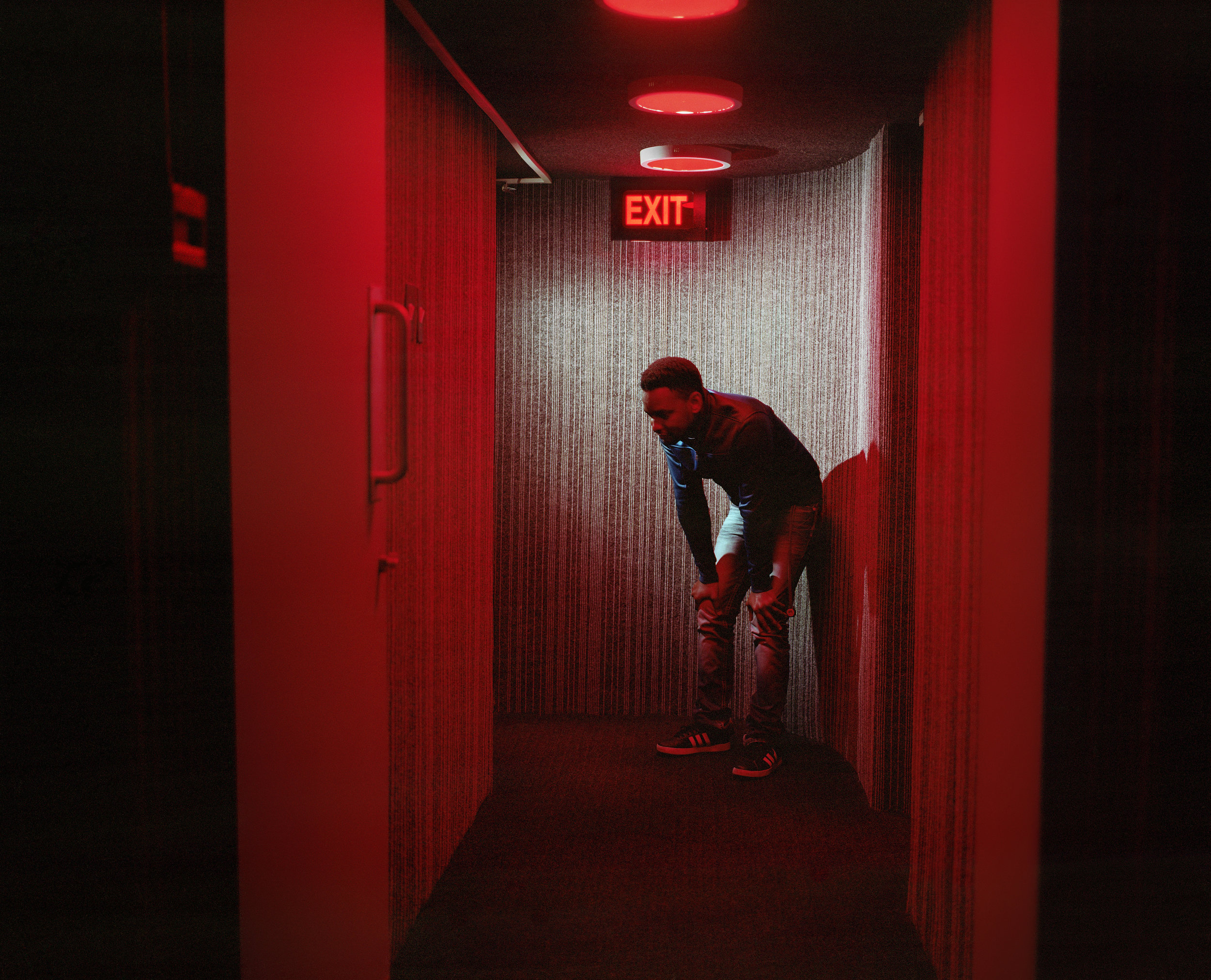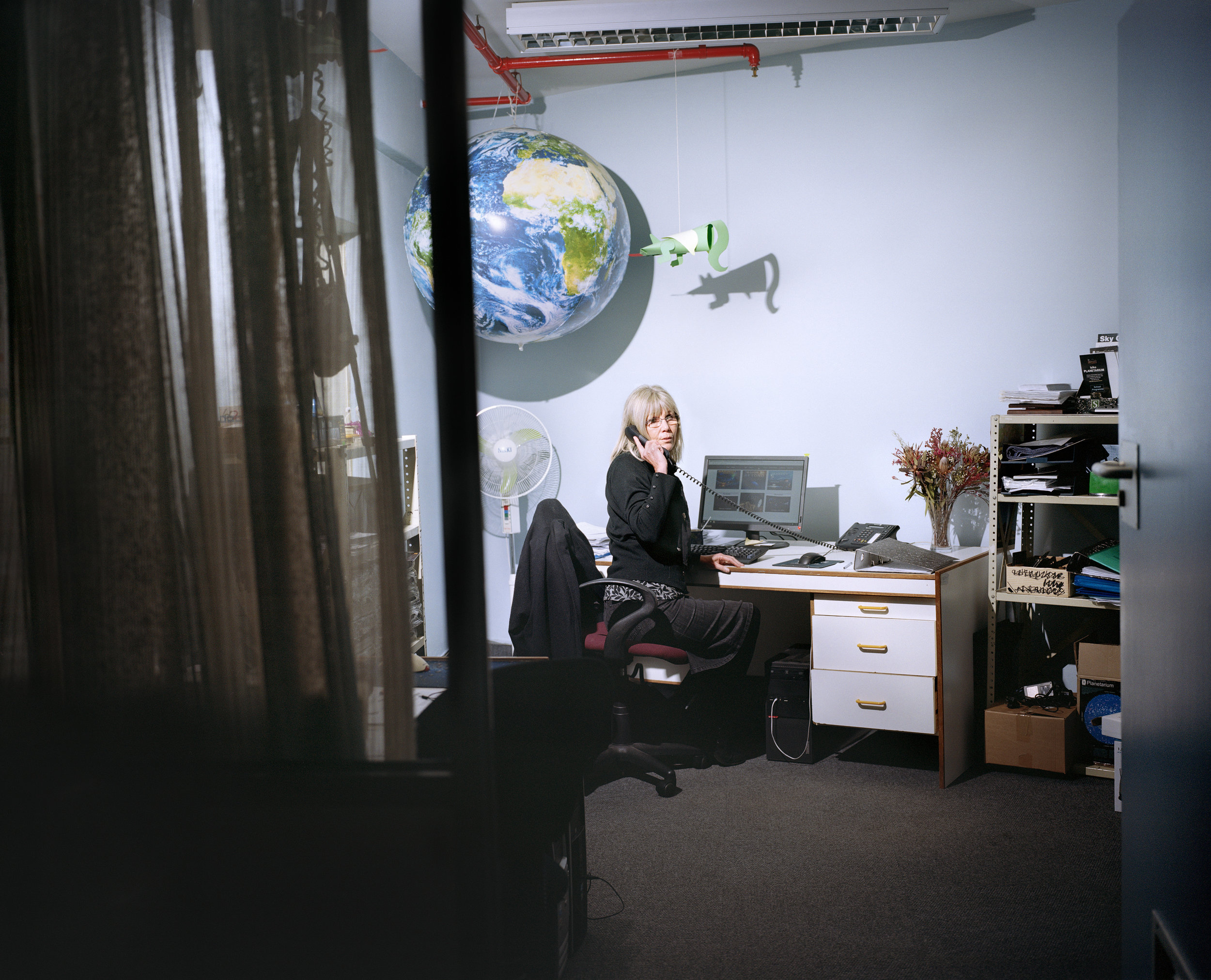'It was formed around the same time as our Sun and the Earth and after a leisurely tour of the Solar System as the centre of an asteroid, it came crashing down into southern Africa as the Gibeon Meteorite.
The Nama people used smaller bits of the meteorite for tools and countless chunks remained scattered over a large area. In 1836 Englishman J. E. Alexander collected samples and sent them to London. John Herschel confirmed they were indeed not of this planet.' *
Ofentse Letebele is part of the team working to translate some of the old Planetarium shows to the new Digital Dome system.
'I’ve learned a a lot about stars by coming here. I knew enough stars before so that I could point out a few, but here I got to learn more about them - about stars, what they are, what they are made of and so on. How they come about and into being. Before we were just learning names and constellations but here we were going deeper into it. Usually I just looked at them - without any understanding. Just you know, like if you looking at a tree that is standing there, you know that it is a tree, it is just there, it is a tree, you don’t really know what it does or anything. So I’ve got to learn more about stars, who they do and what their significance are in our lives and in the lives of everything around us. I understood that things were big you know - like the earth has got to be big, and South Africa has to be big - but without understanding that there were even bigger things out there. You know when you look at the sun, from a distance, like when it is on the horizon before it sets. You are not exactly sure where it is and how it relates to you and your life - you just know it is something that is out there. You are so far away from it, you don’t actually know that is very big. You could fit like a million earths into the sun - that is how big it is. It is hard to grasp. You know you are part of this world, but the universe can feel like something else - far from you. Even at night, you are thinking: there is the universe and here am I. But all in all you are part of the universe, you know, the universe is you, the universe is me, the universe is around - the space we are living in is the universe. This is not just earth and your life and then the universe is over there - you are in the universe. So in terms of understanding the whole universe like that. Ja… ja… a very very big place you know - really no one can understand how big it is, like fully understand. You can talk numbers, like 13,7 billion light years - what is that? You don’t know, but it’s big, something very big.’
This is a transition area between Planetarium entrance and the Planetarium dome - An area where the viewers eyes are given some time to adjust to the darkness that they will be in when inside the dome.
'The place where I was born influenced my life to a great extent - I was born in the Northern Cape, in a small town called Upington, where the summers would be so hot you couldn't sleep indoors; we would carry our beds outside and sleep there. That is where my love of stars started, and it kept on influencing the rest of my life - it is as if I was born to do this. I'm at my happiest when I am here and telling people what they can see up there in the night sky. When I've been away from the planetarium and I come back to it again and activate the system and see what is up there, it is like coming home. It really touches me - I remember showing children for the first time with the new system flying away from Earth, and seeing planet Earth projected on the dome, even though I knew it was just a projection - to me it was such an emotional moment, to see our planet so fragile, so beautiful, so blue, projected on the dome. I could share that moment with the children as it felt like they were with me from the responses I got. You can do so much more with the new system than the old one, although I'm still sometimes very nostalgic about the old system, how it was really a hands-on system, now you are just sitting behind the computer and pressing the buttons, but it can show you show much more and can put you right there. You feel less contained with this system, here I can fly you thought the solar system, through the galaxy, out of our galaxy and the gasps I get from people when they see our galaxy from the outside is just absolutely amazing. This is as close to real as we can take you, without putting you into space, which is of course not possible at the moment!'
Elsabé Uys, Planetarium Presenter, Iziko Planetarium, Cape Town
'Meteorites or shooting stars are regarded in the Xhosa speaking community as a bad luck omen. This is because it is believed that when somebody dies they become an ancestor and the spirit of that dead person is wandering among the stars guarding us from the evil spirits. So if, perhaps, one dies as a bad person then that person would be a bad spirit or ancestor and up in the celestial sphere the good ancestors would kick out the bad ancestors - so when you see a meteor coming down you are actually seeing one of those bad ancestors being kicked out of the celestial sphere and it falls down. When you see this we say ‘let the bad luck pass us for we are not the only one who saw that’ - meaning that we associate that with bad spirit.'
* Makes me think of the heap of equipment hey see when looking back in time in Swart ster oor die Karoo. Perhaps we can include a small quote from the book.





